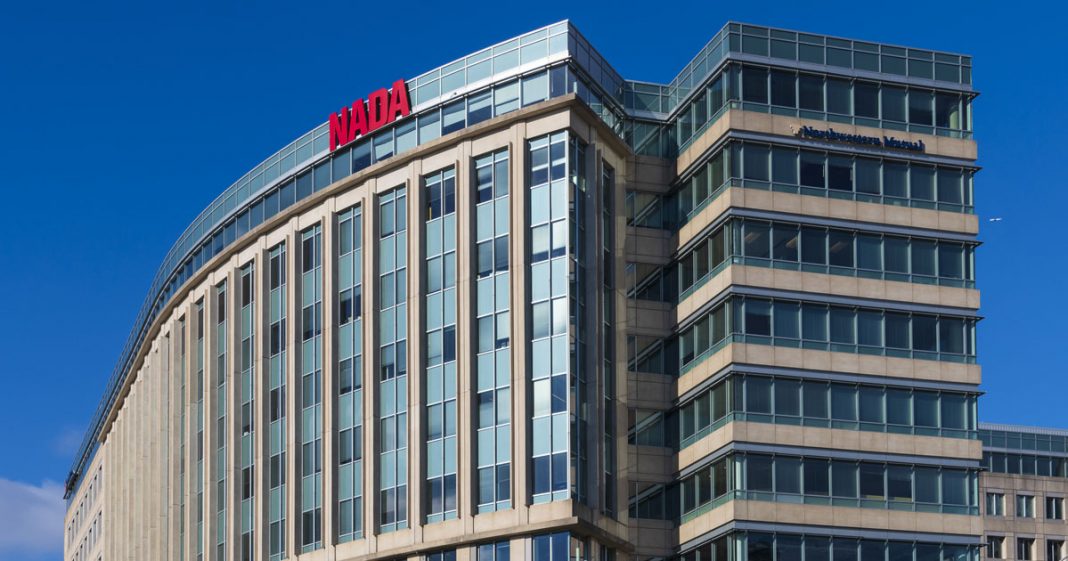The National Automobile Dealers Association (NADA) released their 2021 U.S. auto sales analysis along with their forecast for 2022’s sales climate. After a year of constrained sales due to the pandemic and inventory shortages, NADA’s economists believe that 2022 sales will experience a modest increase and a slow return to more normal staffing levels at dealerships.


Empty dealer lots are the story at the core of NADA’s 2021 analysis. NADA Chief Economist Patrick Manzi said, “The major theme for new-vehicle sales in 2021 was constrained inventory. The coronavirus pandemic and resulting microchip shortage and production cuts significantly constrained new-car and truck inventory at dealerships across the country. Constraints further led to suppressed new-vehicle sales, as well as used-vehicle inventory shortages and increased vehicle prices.”
It’s a story that’s all too familiar, parroted by analysts, carmakers, and dealerships alike. However, the end of 2021 gave the most hope of alleviating chip shortages in the coming months. It’s expected that plant closures due to shortages will be avoided this year, even if the full flow of parts doesn’t fully resume in the calendar year. That would be a relief as AutoForecast Solutions reported that 11.3 million units of production went unrealized through 2021.
Improved sales expected through 2022
However, the most important storyline for dealers and carmakers to come from NADA’s analysis and forecast has to do with improvements through this year. Despite an IHS Markit prediction of seven million unrealized production units through 2022, NADA predicts an increase in new vehicle sales to 15.4 million units. If that occurs, it will be an increase of 3.4% over the totals seen in 2021.
Through 2022, the auto industry can expect growth in vehicle sales equipped with “alternative fuel powertrains” such as hybrids, battery electric vehicles, and fuel cell electric vehicles. This growth alone could account for the expected 3.4% increase expected for the year while internal combustion engine models remain steady or experience minimal increases or decreases.
As well, NADA expects that employment in the auto retail sector to regain momentum as more vehicles are produced and available for sale. Pre-pandemic, employment figures hovered around 1.3 million for nearly four years and peaked at 1.314 million in February 2020, just before the pandemic struck. After a steep decline, slow returns to work have accounted for all but 61,000 of those jobs to come back, according to U.S. Bureau of Labor Statistics.
Manzi said, “We expect employment at franchised new-car dealerships to return closer to pre-pandemic levels as new vehicle production picks up and the microchip shortage slowly dissipates. Furthermore, pent-up demand continues to build, which should help push sales rates closer to pre-pandemic levels once the chip shortage is behind us.”
| Related: A look inside the current state of the semiconductor microchip shortage |
Thousands of potential vehicle purchasers have been sidelined with shrinking incentives and inflated new vehicle prices, especially as dealers add markup over MSRP for the most popular models. Whether due to affordability or simply waiting out for a deal, these shoppers are increasingly primed to buy a vehicle in the coming year, should the industry normalize somewhat.
It’s certainly a rosier outlook than the auto retail industry had one year ago as the depths of the chip shortage were realized. Looking at 2022 and beyond, it appears that dealers have a lot to look forward to.
Did you enjoy this article from Jason Unrau? Read other articles on CBT News here. Please share your thoughts, comments, or questions regarding this topic by submitting a letter to the editor here, or connect with us at newsroom@cbtnews.com.
Be sure to follow us on Facebook and Twitter to stay up to date or catch up on all of our podcasts on demand.
While you’re here, don’t forget to subscribe to our email newsletter for all the latest auto industry news from CBT News.










